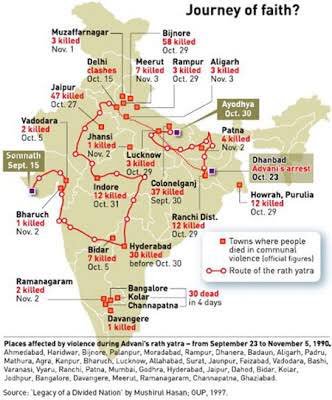Hindu youths chant Shiva chalisa on Taj Mahal premises
The youths, belonging to Rashtra Swabhimaan Dal (RSD) and Hindu
Yuva Vahini (HYV), were taken away by CISF personnel and released after
they submitted a written apology.
india
Updated: Oct 23, 2017 18:41 IST

Hemendra Chaturvedi
Hindustan Times, Agra
Hindustan Times, Agra
The youths claimed the Taj Mahal was originally a Shiva
temple by the name Tejomalaya, which was demolished to build the
monument.(HT PHOTO)
A
dozen youths belonging to Hindu outfits were caught reciting ‘Shiva
Chalisa (hymn)’ on the premises of the Taj Mahal, causing tension at the
iconic monument, which, they claimed, was originally a Shiv temple.
The youths, belonging to Rashtra Swabhimaan Dal (RSD) and Hindu Yuva Vahini (HYV), were taken away by CISF personnel and released after they submitted a written apology.
The incident comes a week after controversial BJP MLA Sangeet Som questioned the Taj Mahal’s place in history, saying that the iconic monument was built by ‘traitors’ who targeted Hindus.
His comments caused a political stir across the country following which the BJP governments in UP and the Centre distanced themselves from the MLA’s comments.
Chief minister Yogi Adityanath is slated to visit Taj on October 26 to review various schemes related to tourism in Agra.
Deepak
Sharma (30) of RSD, who led the group of youths on Monday, justified
the act, saying it was natural to recite ‘Shiv Chalisa’ on Monday, it
being day of Lord Shiva and that Taj Mahal originally was a Shiva
temple.
“It was basically ‘Tejomalaya’, a Shiva temple, which was demolished by Mughal rulers to make the Taj Mahal,” he said.
“I was accompanied by some other RSD activists and those from Hindu Yuva Vahini (HYV), including the Aligarh unit president of HYV, Bharat Goswami,” he said.
Sharma is from Hathras near Agra but has been active in Delhi after completing his post-graduation. He is not new to controversies and claimed that he had blackened the face of noted lawyer Prashant Bhushan after he advocated a referendum in Jammu and Kashmir.
“We did nothing wrong but apologised in writing because we were told by CISF officials that recital of ‘Shiva Chalisa’ was in violation of the Supreme Court orders. We respect the Supreme Court and had no intention to hurt religious feeling of any sect,” Sharma said.
“We plan to file a PIL in the apex court to find an answer as to why Hindus are not allowed to recite ‘Shiv Chalisa’ at the Taj, the building of which is owned by central government, when Muslims can offer namaz there,” he added.
The youths, belonging to Rashtra Swabhimaan Dal (RSD) and Hindu Yuva Vahini (HYV), were taken away by CISF personnel and released after they submitted a written apology.
The incident comes a week after controversial BJP MLA Sangeet Som questioned the Taj Mahal’s place in history, saying that the iconic monument was built by ‘traitors’ who targeted Hindus.
His comments caused a political stir across the country following which the BJP governments in UP and the Centre distanced themselves from the MLA’s comments.
Chief minister Yogi Adityanath is slated to visit Taj on October 26 to review various schemes related to tourism in Agra.
Ads by ZINC
“It was basically ‘Tejomalaya’, a Shiva temple, which was demolished by Mughal rulers to make the Taj Mahal,” he said.
“I was accompanied by some other RSD activists and those from Hindu Yuva Vahini (HYV), including the Aligarh unit president of HYV, Bharat Goswami,” he said.
Sharma is from Hathras near Agra but has been active in Delhi after completing his post-graduation. He is not new to controversies and claimed that he had blackened the face of noted lawyer Prashant Bhushan after he advocated a referendum in Jammu and Kashmir.
“We did nothing wrong but apologised in writing because we were told by CISF officials that recital of ‘Shiva Chalisa’ was in violation of the Supreme Court orders. We respect the Supreme Court and had no intention to hurt religious feeling of any sect,” Sharma said.
“We plan to file a PIL in the apex court to find an answer as to why Hindus are not allowed to recite ‘Shiv Chalisa’ at the Taj, the building of which is owned by central government, when Muslims can offer namaz there,” he added.





